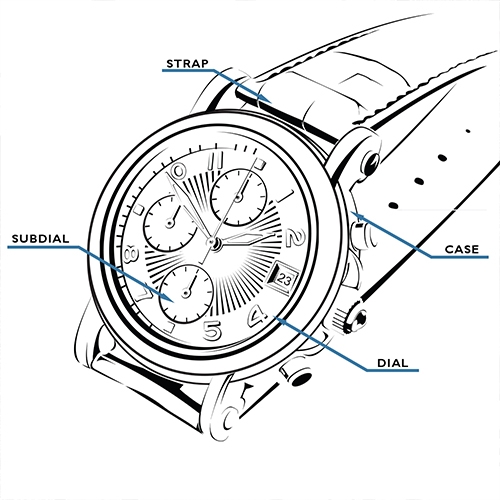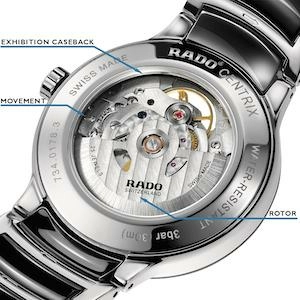Watches, or timepieces, offer fascinating functions for watch enthusiasts. These luxury pieces are expertly designed and assembled by highly skilled watchmakers. While there are functions for time-keeping in multiple time zones, date, day and more complex utilities, watches have common components that work together to create the essence of your watch.

Movement:The movement is a watch’s “engine,” keeping time and powering the functions of the watch.
Case: A watch case holds the movement and protects it.
Caseback: The protective area on the back of the watch. Sometimes watches may have an exhibition caseback, meaning the the case is fitted with a transparent material (sapphire crystal or similar) that shows the movement finishing.
Crystal: Watch crystal is typically made from synthetic sapphire or glass and both protects the watch dial and helps to reduce glare.
Bezel: Typically a metal piece, the bezel is the ring around the crystal that holds the crystal in place.

Dial: The dial indicates the hours and sometimes minutes and seconds on a watch. It is a plate with a metal base on the watch.
Subdial: A watch may have one or multiple subdials which provide additional information.
Lug:Lugs are intended to secure the watch bracelet or strap to the case. Lug width is important to know when shopping for a replacement band for your watch to ensure it is compatible.
Pusher: This is a button on the outside of the watch case that controls specific functions on the watch. This is most commonly found on watches with a chronograph.
Crown: The crown is used to set the calendar and/or time on the watch and is a button located on the outside of the case. Mechanical watches use the crown to wind the mainspring.
Hands: Hands typically indicate hour, minute and seconds on watches.
Strap: The material that harnesses the watch to the write. When made of leather or non-metal material, this is called a strap. When the material is metal-based, it’s called a bracelet.





